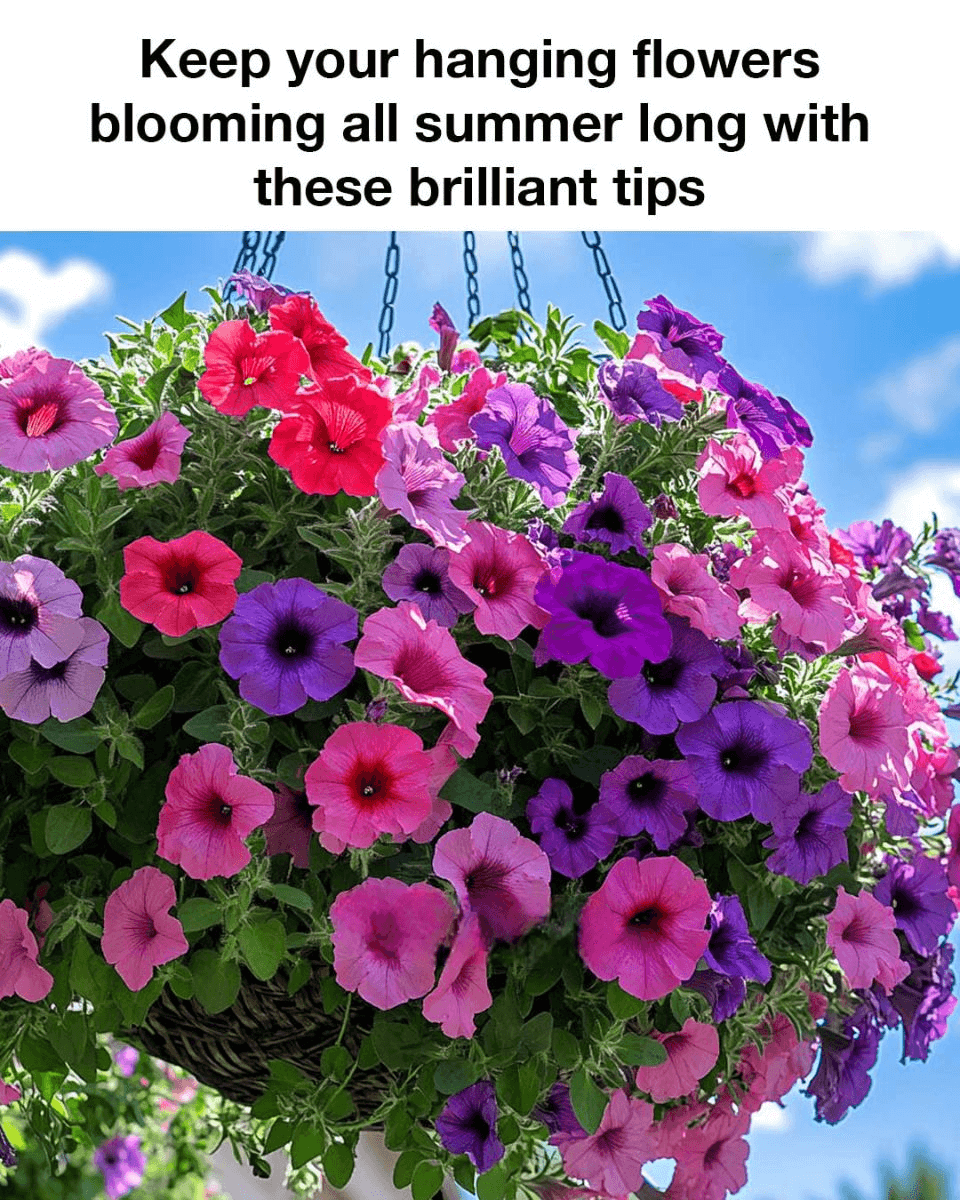Hanging flowers are a charming way to bring color and beauty to outdoor spaces. Whether you hang them on a porch, balcony, or in the garden, these floral arrangements offer a vibrant, eye-catching appeal. During the summer, they can turn an ordinary area into a stunning floral sanctuary. Their raised position not only enhances visibility but also promotes better air circulation, which is especially helpful in hot weather. To keep them blooming through the season, it’s important to understand their unique needs and give them proper care.
Understanding Hanging Flower Care
Unlike in-ground plants, hanging flowers face more exposure to the elements. This can cause their soil to dry out faster. Additionally, the limited space in baskets reduces how much soil and nutrients the plants can access. Knowing these challenges is key to keeping your flowers thriving. Key care aspects include managing sunlight, watering consistently, choosing the right soil, and guarding against pests and disease.
Picking the Best Flowers for Summer Baskets
Choosing flowers that bloom well in summer is the first step to ensuring a full season of beauty. Popular choices like petunias, geraniums, fuchsias, and calibrachoas are ideal, as they love the heat and bloom continuously. Consider the sunlight in your area—petunias and geraniums thrive in full sun, while fuchsias do better with some shade. Combining different plants can make your arrangement even more vibrant and attractive.
Tip 1: Choose a Spot with Ideal Sun Exposure
Where you place your hanging baskets makes a big difference. Most flowering plants need at least six hours of sun daily. However, too much direct afternoon sunlight can lead to wilting. Try to hang your baskets where they’ll get morning sunlight and some shade in the afternoon. Reevaluate the placement occasionally, as the sun’s angle changes throughout the summer.
Tip 2: Promote Good Drainage to Avoid Root Rot
To keep roots healthy, make sure your baskets drain properly. Choose containers with holes at the bottom and consider adding gravel or broken pottery pieces to help water flow out. Use a potting mix designed for containers—these usually contain perlite or vermiculite to boost aeration and drainage.
Tip 3: Maintain Consistent Watering
During hot summer days, your hanging plants will need regular watering. Water them early in the morning or in the late afternoon to reduce evaporation and allow time for absorption. Use a long-spouted watering can or a hose with a soft spray nozzle to water gently without damaging leaves. Check soil moisture by feeling it—if the top inch is dry, it’s time to water.
Tip 4: Feed Regularly for Steady Growth
Feeding your plants is essential to keeping them full of blooms. Apply a balanced, water-soluble fertilizer every two weeks or use a slow-release fertilizer at the beginning of the season. Be careful not to overdo it—too much fertilizer can cause lush foliage but fewer flowers.
Tip 5: Prune and Deadhead to Boost Flowering
Trimming off old flowers and yellowing leaves encourages fresh growth and more blooms. It also helps keep your hanging basket looking neat. If stems become leggy, pinch them back to maintain a compact shape. Always use clean, sharp tools to avoid injuring the plant.
Tip 6: Watch for Pests and Disease
Hanging baskets can still fall victim to insects or fungal infections. Inspect your plants regularly for signs of trouble like aphids or spider mites. You can manage pests naturally with beneficial bugs like ladybugs or by using organic sprays. Make sure there’s good airflow to reduce the risk of disease, and remove any affected parts promptly.
Tip 7: Use Mulch to Keep Soil Moist and Cool
A thin layer of mulch on top of the soil helps retain moisture and regulate temperature. Organic options like shredded bark or coconut coir are ideal—they decompose slowly and add nutrients over time. Mulch also discourages weeds and adds a finished look to your basket.
Tip 8: Rotate for Balanced Growth
Rotating your hanging baskets every few weeks ensures that all sides get equal sun and air. This prevents lopsided growth and keeps your plants looking balanced. It also gives you the chance to check on your plants from every angle and catch problems early.
Tip 9: Mix in Companion Plants for Extra Benefits
Planting flowers with compatible companions can improve your hanging basket’s health and appearance. For example, marigolds can repel pests, while trailing plants like ivy or sweet potato vine add visual flair. Just make sure all the plants have similar water and sunlight needs.
Tip 10: Adjust Care Based on the Weather
Weather can change quickly in summer, and your care routine should change with it. On extremely hot days, you might need to water more often or move your baskets to a cooler spot. When storms are forecast, take them down and place them somewhere safe to prevent damage.
Conclusion: Keep Your Hanging Baskets Beautiful All Summer Long
With thoughtful care and regular attention, your hanging flower baskets can bloom beautifully throughout the summer. By understanding their needs and following these helpful tips, you can enjoy a colorful, fragrant display that adds life to your outdoor space. Take pride in your work and the garden oasis you’ve created.
